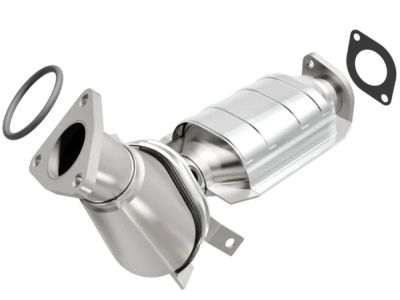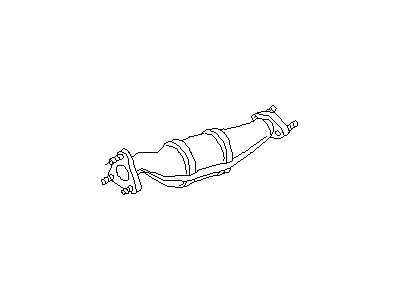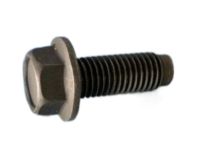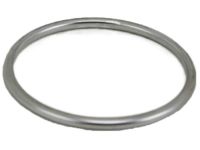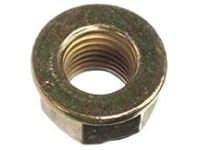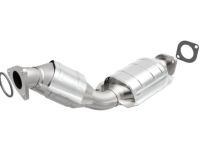A catalytic converter serves as an emission control device within the exhaust system, reducing specific pollutants in the exhaust gas stream. Two types of converters exist: an oxidation catalyst for reducing hydrocarbons (HC) and carbon monoxide (CO), and a reduction catalyst for reducing oxides of nitrogen (NOx). A "Three-Way Catalyst" (TWC) can reduce all three pollutants. Before catalytic converter removal, the oxygen sensors should be removed. The upper end of each catalyst includes an inlet pipe with a mounting flange attaching to the exhaust manifold flange, while the lower end has an outlet pipe with a flange connecting to the Y-pipe and the rest of the exhaust system. To diagnose potential catalytic converter issues, costly test equipment, such as a loaded-mode dynamometer and a 5-gas analyzer, is required, so it's advisable to seek diagnosis and repairs at a dealer or authorized emission inspection facility. When performing underbody component service with the vehicle raised, inspect the converter for leaks, corrosion, dents, or damage, paying close attention to welds, flange bolts, and nuts connecting the front and rear ends; replace the converter if any damage is evident. Though catalytic converters seldom fail, they can become restricted or blocked. To check for a restricted converter, use a vacuum gauge to assess the impact of a blocked exhaust on intake vacuum, following a specific procedure involving recording vacuum readings at idle and under throttle conditions. If the fourth reading is significantly lower than the idle reading, it suggests exhaust system restriction, potentially due to a plugged catalytic converter or other obstructions like an exhaust pipe or muffler. To replace the catalytic converter, lift the vehicle securely on jackstands, apply penetrating oil to catalyst-to-exhaust manifold studs, clamp bolt nuts, and bracket fasteners, allowing time for penetration. Simultaneously, disconnect the downstream oxygen sensor and remove it. Next, remove the upper and lower catalyst mounting nuts, take out the catalytic converter, and discard old flange gaskets. For installation, follow the reverse procedure, using new flange gaskets and replacing any damaged fasteners while ensuring tight nut fastening.
Posted by NissanPartsDeal Specialist 
